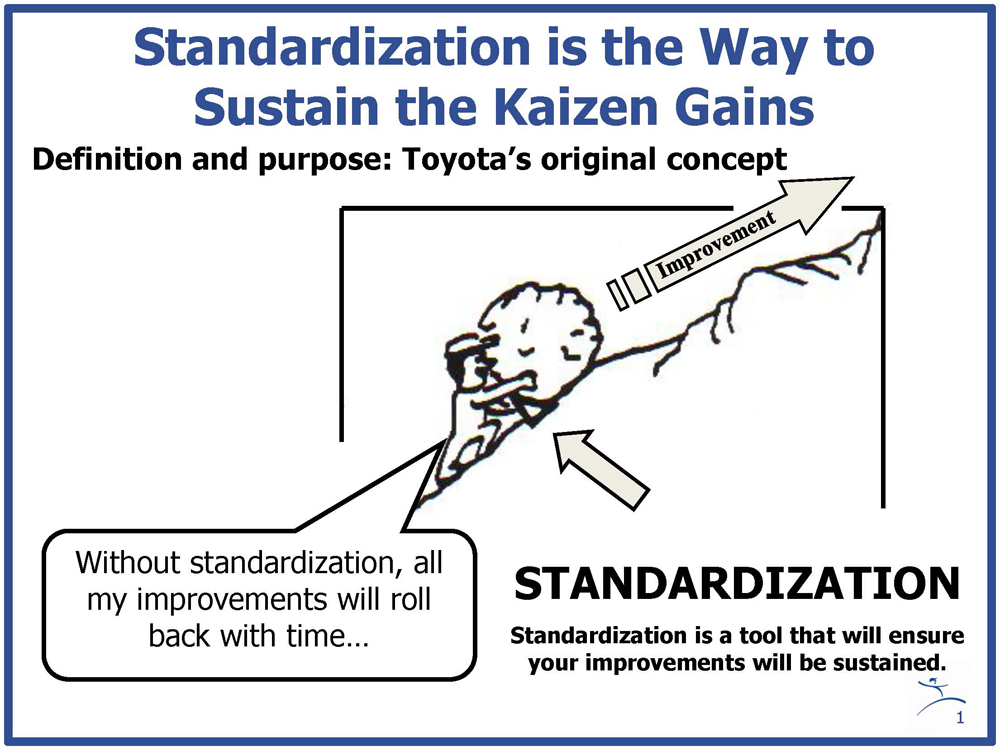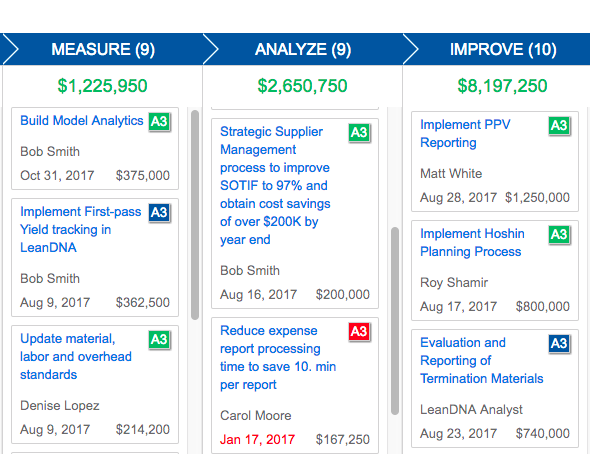How to Make Your Continuous Improvement Process Really Stick With these Lean Supply Chain Management Tips

Follow these Lean Supply Chain Management Steps to Learn How to Make Your Continuous Improvement Process Work
Have you ever spent tons of time planning and executing a new lean project, only to have it lose steam just a few months later? Sustainability in lean is extremely difficult to achieve, so this might sound familiar. It’s like your project never happened in the first place!
When people who put together a project move on to other responsibilities, all your progress can fall away. Launching new continuous improvement initiatives is important, but sustaining and expanding is where the real business impact emerges.
In order for a lean project to truly be successful, it has to stick around beyond its initial implementation. Here’s what you can do to ensure that your efforts (and the business results) make lean really stick around for the long haul.
Go Beyond Identifying the Problem
 In this funny TV ad, a man suffering from a painful cavity is surprised when his “dentist” turns out to be a “dental monitor” whose sole job is to point out the problem. Seems like an outrageous situation, right? But if you think about it, it really is easy to get caught in the trap of calling problem identification a job well done.
In this funny TV ad, a man suffering from a painful cavity is surprised when his “dentist” turns out to be a “dental monitor” whose sole job is to point out the problem. Seems like an outrageous situation, right? But if you think about it, it really is easy to get caught in the trap of calling problem identification a job well done.
As you build out lean projects, avoid being a Lean or Continuous Improvement Monitor. Enter into initiatives with the tools to solve the problem, not highlight it.
Your greatest asset in this process is this question: “So What?” Always challenge yourself to generate an action item for every challenge. The processes you put in place should do more than identify a problem, but point people towards a solution.
Establish Leader Standard Work
 Standardized work is one of the key foundations of lean manufacturing. On the factory floor, workers align on targets, goals, and processes to complete assemblies successfully.
Standardized work is one of the key foundations of lean manufacturing. On the factory floor, workers align on targets, goals, and processes to complete assemblies successfully.
But standard work should extend to manufacturing leadership, too. Establish standards that your leadership team can uphold around measurement, analysis, and reporting. Get the whole team working from the same dashboards to maximize consistency. Then, set up schedules and targets for execution.
For example, your team might set a goal to review KPIs at 9AM, then review root cause analysis and meet for follow-up at 10AM. When every leader knows which dashboards to access and what they need to bring to the table each day, success becomes the new standard.
When everyone from the factory floor to the CEO is aligned around lean processes, success happens naturally.
Link Metrics to Projects
 So you’ve got a new lean project in the works that will make big waves. Now what? Make sure your project has a lasting impact by linking it directly with metrics and KPIs.
So you’ve got a new lean project in the works that will make big waves. Now what? Make sure your project has a lasting impact by linking it directly with metrics and KPIs.
As you set up your lean projects, assign KPIs and the metrics that need to be measured for success. Ultimately, this should all roll up to a dollar amount. How much did your project cut operating costs, eliminate excess inventory, or increase efficiency?
For example, let’s say that you started a new lean project to improve supplier on-time delivery. You want to link supplier lead time and defect rate metrics directly to the initiative to see progress and success as it happens. And of course, tie financial impact metrics to know the bottom-line impact.
When any project is complete, verify the results with actual financial data. Make metrics a key part of your vernacular from the earliest stages of your project.
Measure Every Day
Sometimes, all you need to make a project stick is to track it every day.
Yes, really! A little data every day makes a big difference. When you record a metric every day, you end up with greater visibility and accountability. Planet Lean has a great write-up on how and why to measure daily that’s worth checking out.
Data should be recorded in a place where anyone can access results at any time. This process lets anyone within your organization check the status of continuous improvement projects at any time. Also, it prevents valuable data from a lifetime of imprisonment in a disconnected Excel file, never to see the light of day.
Diligent data collection sets you up for long-lasting success. Set daily reminders for tracking, add it to your daily standard work, and build data collection into your project’s success metrics. Are you seeing how this all comes together?
Combine Lean Culture and Lean Systems
There are a ton of great resources out there on the importance and benefits of creating a lean culture. When lean becomes a part of how employees work together every day, it becomes second nature. But an overlooked aspect of lean is that your tools and systems, like your human capital, need to be built for lean too.
If your systems cannot support your lean projects, you are stuck. You and your team can put together the most amazing plan, but you will fail if you don’t have the right platform to launch your ideas into action.
Look for a platform that is designed specifically for lean. Built-in A3 reporting, X-Matrix for goal deployment, and system-wide views to easily understand performance KPIs are good features to start with. And good system should be easy-to-use and visual – if it makes your life easier, it will be used!
Systems are what really drive your business. Make sure your systems, tools, and processes are as ready for lean as your people.
Ready to Get More From Your Continuous Improvement Process?
The true value of lean emerges when your initiatives stick around for the long haul. And good news – these strategies for sustainable and sticky lean projects are not that hard to do. Focusing on actions, establishing leader standard work, focusing on metrics and measurement, and equipping yourself with the right lean tools to get the job done are good habits you can build into your everyday tasks for long-lasting financial impact.
Learn More About LeanDNA’s Lean Supply Chain Management Capabilities
Discover ways to maximize collaboration and performance to achieve organizational goals by clicking here>>
When ensuring that lean manufacturing practices stick, it is important to incorporate them into your standard workflows.
By synchronizing teams with standard workflows for factory management, supply chain leaders can ensure that managers and their teams are aligned, not only within teams, but across different groups and sites.
Achieve agile workflows that help you achieve your business goals.
Graco Supply Company is committed to making lean stick.
We sat down with the Director of Information Technology, Jason Irvan, to see how he manages being a supply chain manager at a high-performing manufacturing company that is committed to lean idealogy.
Learn the secrets to success in lean supply chain management.

